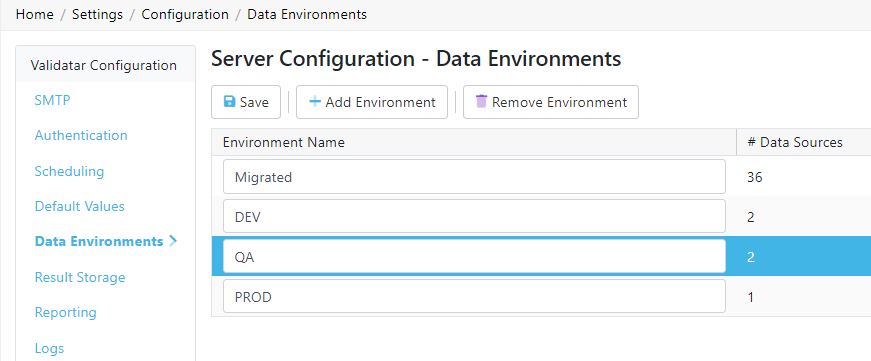Overview
Data Environments help to define a data source's usage relating to development and deployments.

Standard environment names include:
- Development or DEV
- Test or QA
- Production or PROD
- UAT
Usage of these environments helps separate architectures for deployments and are used in development. Adding an environment to your data source allows you to use the same name for different database connections but differentiate them by attaching the development environment.
Adding an Environment
- Navigate to Settings > Configuration > Data Environments.
- Click Add Environment.
- Enter environment name.
- Add as many environments as needed.
- Click Save.
Removing an Environment
- Navigate to Settings > Configuration > Data Environments.
- Select the environment from the list.
- Click Remove Environment.
Assigning an Environment to a Data Source
- A Data Source Admin or Global Admin must navigate to Settings > Data Sources > Select the Data Source.
- On the General tab, select an Environment from the dropdown.
- Click Save.
You can find the total number of data sources assigned to an Environment on the Data Environments list page.
Migrated Environment
If you're upgrading from an older version to 2021.3, all data sources will inherit the Migrated environment automatically. You can change the name after the upgrade is complete.